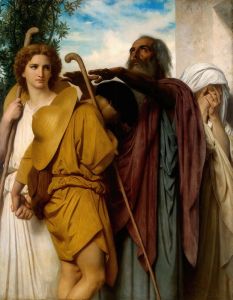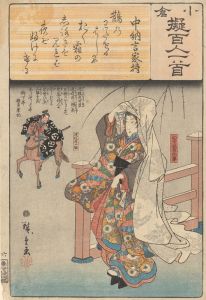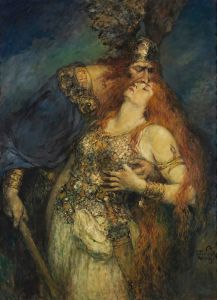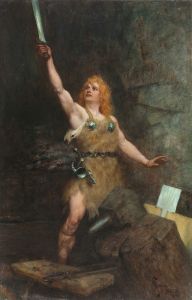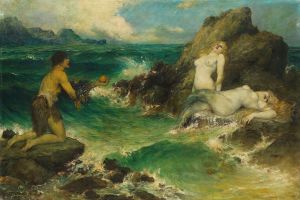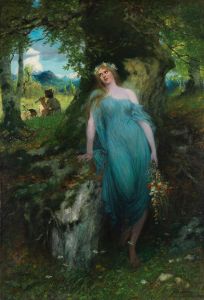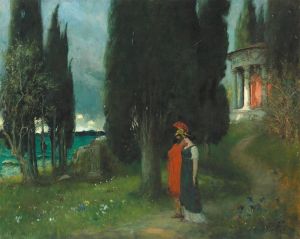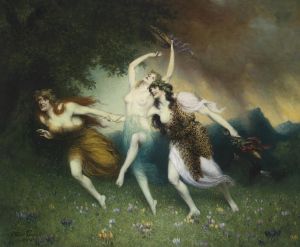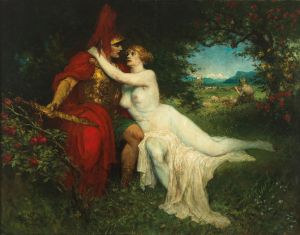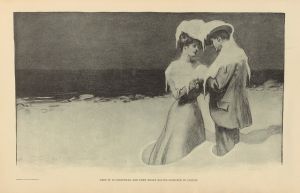
Wotan’s Farewell To Brunhilde
A hand-painted replica of Ferdinand Leeke’s masterpiece Wotan’s Farewell To Brunhilde, meticulously crafted by professional artists to capture the true essence of the original. Each piece is created with museum-quality canvas and rare mineral pigments, carefully painted by experienced artists with delicate brushstrokes and rich, layered colors to perfectly recreate the texture of the original artwork. Unlike machine-printed reproductions, this hand-painted version brings the painting to life, infused with the artist’s emotions and skill in every stroke. Whether for personal collection or home decoration, it instantly elevates the artistic atmosphere of any space.
Ferdinand Leeke was a German painter known for his works inspired by the operas of Richard Wagner. One of his notable paintings, Wotan’s Farewell to Brünnhilde, depicts a pivotal scene from Wagner’s opera Die Walküre, the second installment of the composer’s monumental Der Ring des Nibelungen cycle. Leeke’s painting captures the emotional intensity and dramatic essence of this moment, reflecting his skill in translating Wagnerian themes into visual art.
In Die Walküre, Wotan, the chief of the gods, is forced to punish his daughter Brünnhilde for defying his orders. However, his punishment is tempered by his deep love for her. In this scene, Wotan bids a sorrowful farewell to Brünnhilde, placing her into a deep sleep and surrounding her with a ring of magical fire to protect her until a hero worthy of her awakens her. Leeke’s painting portrays this emotionally charged moment, emphasizing the complex relationship between father and daughter, as well as the themes of love, sacrifice, and destiny central to Wagner’s opera.
Leeke’s work is characterized by its romantic and dramatic style, which aligns with the operatic grandeur of Wagner’s compositions. His paintings often focus on key moments from Wagner’s operas, and Wotan’s Farewell to Brünnhilde is a prime example of his ability to convey the narrative and emotional depth of these stories. The painting is notable for its use of vivid colors, dynamic composition, and attention to detail, which bring the mythological scene to life.
Ferdinand Leeke created a series of paintings based on Wagner’s operas, commissioned by the publisher Siegfried Wagner, the composer’s son, in the early 20th century. These works were intended to popularize Wagner’s operas and make their themes accessible to a broader audience through visual representation. Leeke’s paintings, including Wotan’s Farewell to Brünnhilde, have since become associated with the visual legacy of Wagner’s music dramas.
While specific details about the current location or ownership of Wotan’s Farewell to Brünnhilde are not widely documented, the painting remains an important example of Leeke’s contributions to the visual interpretation of Wagnerian opera. It continues to be appreciated for its artistic merit and its role in bridging the worlds of music and visual art.





